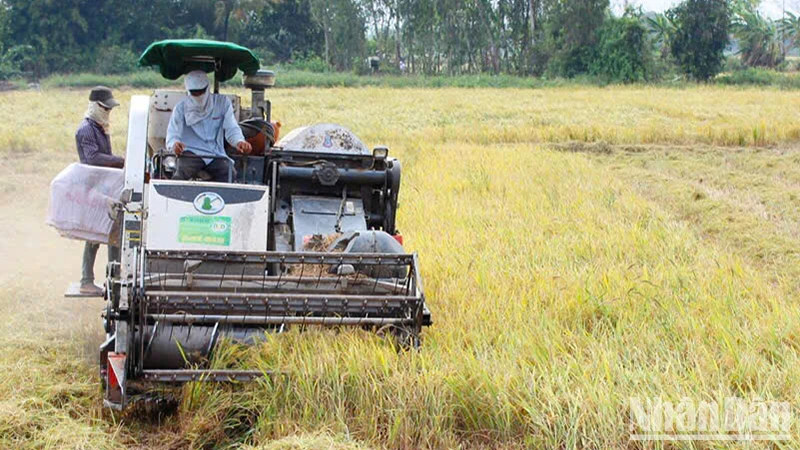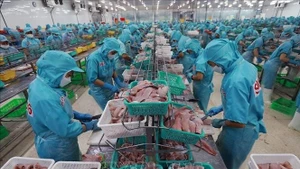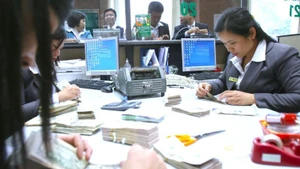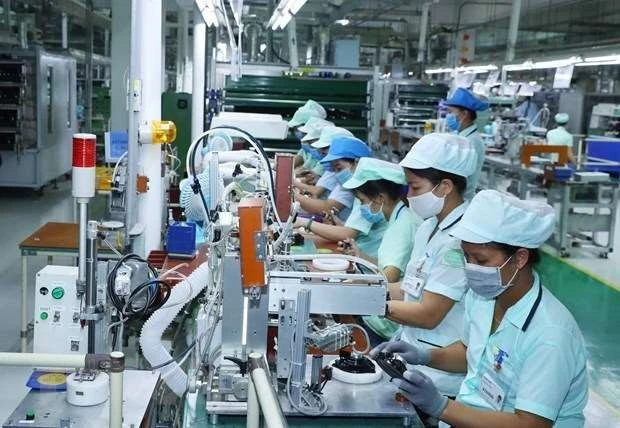The added value of this sector in the first three quarters of 2024 increased by 3.20%, contributing 5.37% to the total added value growth of the entire economy.
Meanwhile, the agriculture sector has set a growth target of 3.2%-4% in 2024. Therefore, timely and effective solutions are needed to boost production development and promote exports from now until the end of the year.
Positive growth
According to the Ministry of Planning and Investment (MoPI), the GDP growth rate of the whole country and many localities is forecast to slow down in the remaining months of the year due to the impact of storm No.3. It is estimated that in 2024, GDP may decrease by 0.15% compared to the projected scenario. In particular, the agro-forestry-fishery sector recorded 0.33% compared to industry and construction at 0.05% and services at 0.22%.
Data from the General Statistics Office (GSO) demonstrates that the entire agricultural sector still reported positive growth in three quarters of the year. Specifically, in the first nine months of 2024, rice production in harvested areas reached 34 million tonnes, a year-on-year increase of 1.5%. Although perennial crop production was affected by the recent typhoon and flooding in September, the overall performance for the first nine months was still quite good. Most key fruit crops achieved higher yields compared to the same period last year, with durian reaching 984,800 tonnes (up 16.6%), mangoes at 858,400 tonnes (up by 3.6%), oranges at 1,084,400 tonnes (up by 2.3%), and dragon fruit at 692,800 tonnes (up by 1.3%).
Deputy Minister of Agriculture and Rural Development (MoARD) Phung Duc Tien said that the agricultural sector and northern localities must urgently restore agricultural, forestry and fishery production after storm No.3.
Restoring production and expanding consumption markets
Deputy Secretary General of the Vietnam Association of Seafood Exporters and Producers (VASEP) Nguyen Hoai Nam said that after storm No.3, many businesses suffered heavy losses in infrastructure, reduced business opportunities, and severe disruptions in the transportation of export orders, supply chains and logistics. In addition, many aquaculture areas were also almost completely damaged. Meanwhile, the demand for seafood supply is increasing from now until the end of the year. To restore production, businesses need timely and effective support, with the most important solutions being related to credit. Regarding seafood businesses, VASEP has recommended that insurance companies provide timely assistance for businesses with cash flow to recover production.
Currently, the Ministry of Agriculture and Rural Development presides over and coordinates with relevant ministries, agencies and localities to review agricultural production plans and strategies. They are also considering boosting production in localities that were not affected by the recent storms and floods to proactively regulate and ensure a sufficient supply of food and agricultural products in the coming time. The ministry is also reviewing and compiling support recommendations from localities on providing materials and chemicals for environmental treatment, plant varieties, livestock and aquatic breeds for people to restore production. Various industries have the fastest and most effective production recovery plans to maintain growth momentum.
Export value to all markets increased in the first nine months of 2024, Asia by 17.4%, America by 26.1%, Europe by 34.6%, and Oceania by 16.1%. The US, China and Japan continue to be the three largest export markets for agricultural, forestry and fishery products in Vietnam. Specifically, export value to the US accounted for 21.6%, up 27.5%; China accounted for 20.8%, up 10.7%; and Japan accounted for 6.6%, up 7.1%.
In the remaining months of this year, the Ministry of Industry and Trade (MOIT) will focus on addressing difficulties for enterprises and production facilities to boost production and promote exports. The ministry will take advantage of existing export orders and opportunities to enter global markets, particularly agricultural and food products. Efforts will also be made to maximise the potential of traditional markets while exploring and tapping into new markets with significant growth potential.
















